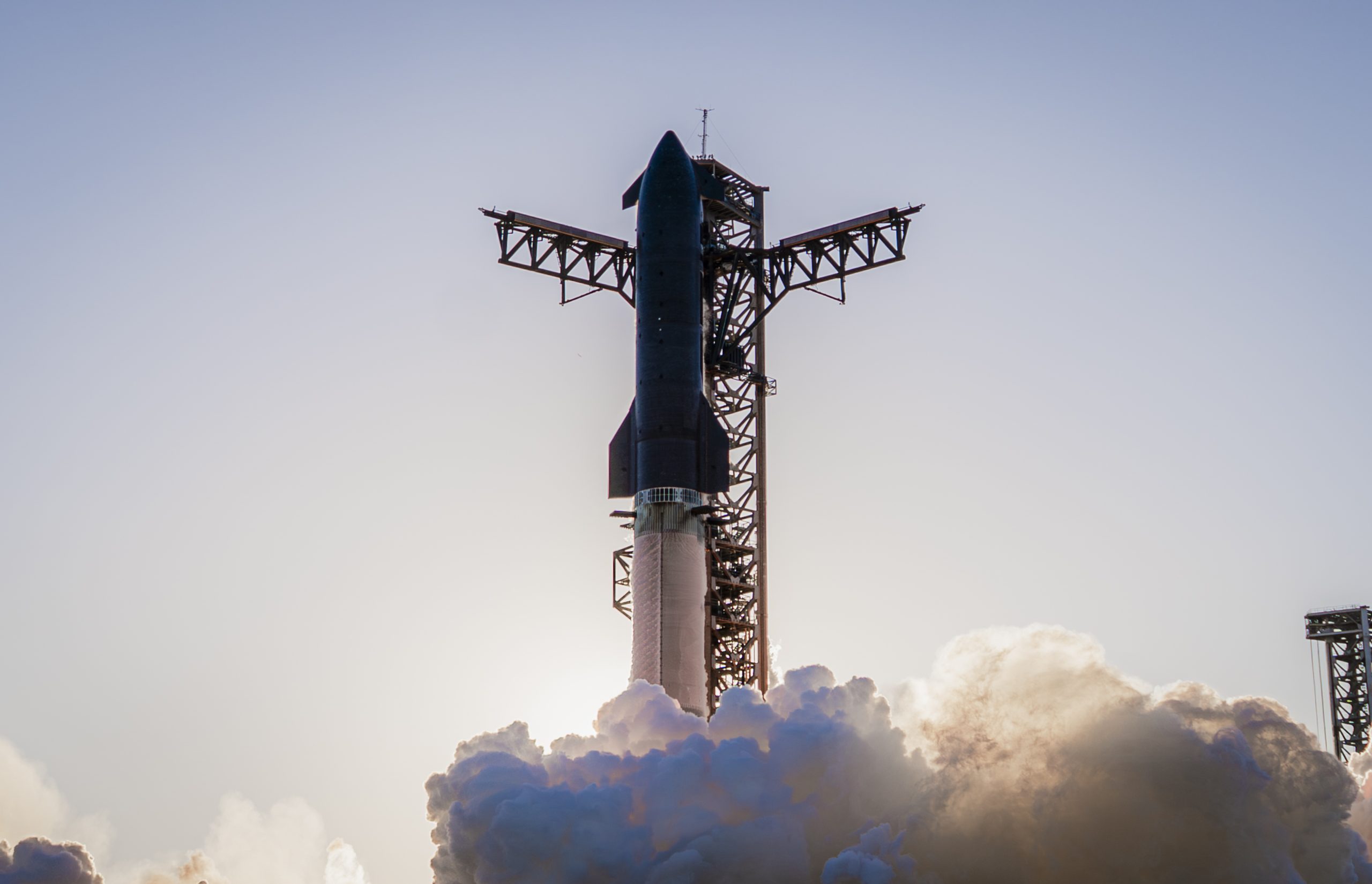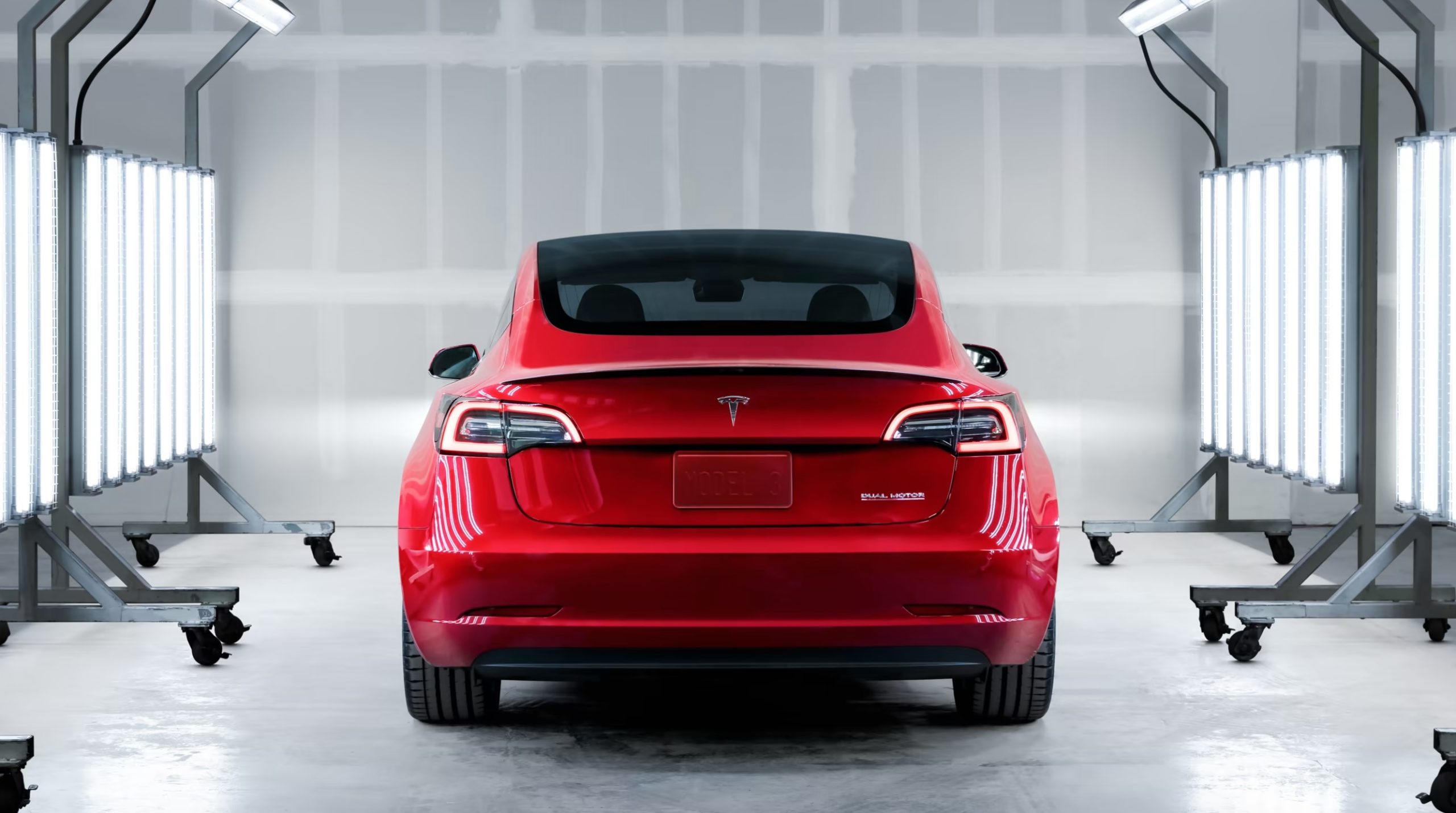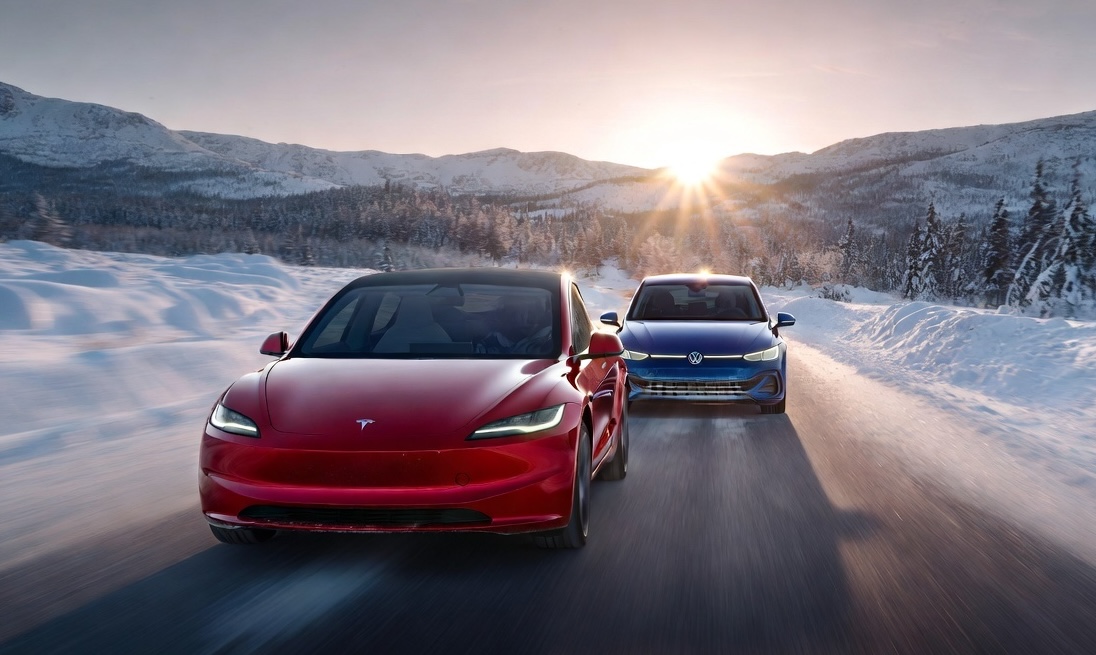News
Elon Musk says Autopilot can have ‘significant improvements’ via software update
![Tesla Autopilot Version 7.0 Dashboard Display [Source: Tesla Motors]](https://www.teslarati.com/wp-content/uploads/2015/10/Tesla-Version-7-Autopilot-Dash.jpg)
Tesla CEO Elon Musk says that current Autopilot can see ‘significant improvements’ via an over-the-air software update. The announcement was made on Sunday after Musk took to Twitter to reveal that he had earlier talks with Bosch, maker of the radar equipment used on the Model S and Model X. Aside from feeling hopeful that the existing Autopilot system can be improved without hardware upgrades, Musk also thanked driver-assistance technology company MobilEye “for their help and support in making Autopilot better.”
Btw, want to thank both Bosch and MobilEye for their help and support in making Autopilot better. Please direct all criticism at Tesla.
— Elon Musk (@elonmusk) July 17, 2016
When questioned about whether radar would be capable of detecting people – previous tests pitting a moving Tesla vs. a live human suggested that current versions of Autopilot were not great at detecting humans – Musk defended the company’s use of radar stating that radar can in fact detect humans at moderate range, however Tesla’s Autopilot suite also uses ultrasonic sensors which are “very good at human detection”.
It can at moderate range, but our ultrasonics are very good at human (or anything >= water density) detection
— Elon Musk (@elonmusk) July 17, 2016
Musk did not provide any details on when the next update of Autopilot would arrive, but did say that Tesla Version 8.0 would be the company’s largest software release since the first rollout of Autopilot 1.0.
V8 will be our biggest release since v1, so taking longer to refine. Awesome on every level. Meeting w design team every day.
— Elon Musk (@elonmusk) July 17, 2016
Musk also took the opportunity to defend his position on Autopilot after Consumer Reports criticized Tesla for releasing the auto-steering feature within the Autopilot suite. CR along with mass media have continued to put pressure on the Silicon Valley automaker and energy company to reconsider the use of beta software after Joshua Brown was killed when his Model S driving on Autopilot collided with a tractor trailer.
Musk posted a link to the a great write up by a Tesla owner on TMC who shared his thoughts on Autopilot. He also tweeted praise on an article in The Guardian entitled “The First Self-Driving Car Fatality Proves Nothing.”, by John Naughton. The author quite correctly points out, “In the US, about 33,000 people are killed in automobile accidents every year. That’s 90 a day on average. So on 7 May, about 89 other people as well as Joshua Brown were killed in car crashes. But we heard nothing about those 89 personal and family tragedies: the only death that most people in the US heard about was Mr Brown’s.”
Tesla customers are v smart & don't want media speaking on their behalf abt Autopilot. Recent poll: 0.0% want it disabled — not 0.1%, 0.0%.
— Elon Musk (@elonmusk) July 17, 2016
Media and even the US Senate want to get in on the Tesla bashing fun. The New York Times claims “the race by automakers and technology firms to develop self-driving cars has been fueled by the belief that computers can operate a vehicle more safely than human drivers. But that view is now in question after the revelation on Thursday that the driver of a Tesla Model S electric sedan was killed in an accident when the car was in self-driving mode.”
Really, asks Naughton? He refers to a recent report by the Rand Corporation that says, “[F]ully autonomous vehicles would have to be driven hundreds of millions of miles and sometimes hundreds of billions of miles to demonstrate their safety in terms of fatalities and injuries. Under even aggressive testing assumptions, existing fleets would take tens and sometimes hundreds of years to drive these miles — an impossible proposition if the aim is to demonstrate performance prior to releasing them for consumer use.
“Our findings demonstrate that developers of this technology and third-party testers cannot simply drive their way to safety. Instead, they will need to develop innovative methods of demonstrating safety and reliability. And yet, it may still not be possible to establish with certainty the safety of autonomous vehicles.
“Therefore, it is imperative that autonomous vehicle regulations are adaptive — designed from the outset to evolve with the technology so that society can better harness the benefits and manage the risks of these rapidly evolving and potentially transformative technologies.”
The hope here is that concerns about Autopilot do not turn into a media driven maelstrom. If Musk’s tweets are any indication, Tesla is laser-focused on bringing about its next generation Autopilot 2.0.

Elon Musk
SpaceX maintains unbelievable Starship target despite Booster 18 incident
It appears that it will take more than an anomaly to stop SpaceX’s march towards Starship V3’s refinement.

SpaceX recently shared an incredibly ambitious and bold update about Starship V3’s 12th test flight.
Despite the anomaly that damaged Booster 18, SpaceX maintained that it was still following its plans for the upgraded spacecraft and booster for the coming months. Needless to say, it appears that it will take more than an anomaly to stop SpaceX’s march towards Starship V3’s refinement.
Starship V3 is still on a rapid development path
SpaceX’s update was posted through the private space company’s official account on social media platform X. As per the company, “the Starbase team plans to have the next Super Heavy booster stacked in December, which puts it on pace with the test schedule planned for the first Starship V3 vehicle and associated ground systems.”
SpaceX then announced that Starship V3’s maiden flight is still expected to happen early next year. “Starship’s twelfth flight test remains targeted for the first quarter of 2026,” the company wrote in its post on X.
Elon Musk mentioned a similar timeline on X earlier this year. In the lead up to Starshp Flight 11, which proved flawless, Musk stated that “Starship V3 is a massive upgrade from the current V2 and should be through production and testing by end of year, with heavy flight activity next year.” Musk has also mentioned that Starship V3 should be good enough to use for initial Mars missions.
Booster 18 failure not slowing Starship V3’s schedule
SpaceX’s bold update came after Booster 18 experienced a major anomaly during gas system pressure testing at SpaceX’s Massey facility in Starbase, Texas. SpaceX confirmed in a post on X that no propellant was loaded, no engines were installed, and personnel were positioned at a safe distance when the booster’s lower section crumpled, resulting in no injuries.
Still, livestream footage showed significant damage around the liquid oxygen tank area of Booster 18, leading observers to speculate that the booster was a total loss. Booster 18 was among the earliest vehicles in the Starship V3 series, making the failure notable. Despite the setback, Starship V3’s development plans appear unchanged, with SpaceX pushing ahead of its Q1 2026 test flight target.
News
Tesla Sweden faces fresh union blockade at key Gothenburg paint shop
Allround Lack works with painting and damage repair of passenger cars, including Teslas.

Tesla’s ongoing labor conflict in Sweden escalated again as the trade union IF Metall issued a new blockade halting all Tesla paintwork at Allround Lack in Gothenburg.
Allround Lack works with painting and damage repair of passenger cars, including Teslas. It currently employs about 20 employees.
Yet another blockade against Tesla Sweden
IF Metall’s latest notice ordered a full work stoppage for all Tesla-related activity at Allround Lack. With the blockade in place, paint jobs on Tesla-owned vehicles, factory-warranty repairs, and transport-damage fixes, will be effectively frozen, as noted in a report from Dagens Arbete. While Allround Lack is a small paint shop, its work with Tesla means that the blockade would add challenges to the company’s operations in Sweden, at least to some degree.
Paint shop blockades have been a recurring tool in the longstanding conflict. The first appeared in late 2023, when repair shops were barred from servicing Tesla vehicles. Days later, the Painters’ Union implemented a nationwide halt on Tesla paint work across more than 100 shops. Since then, a steady stream of workshops has been pulled into the conflict.
Earlier blockades faced backlash from consumers
The sweeping effects of the early blockades drew criticism from industry groups and consumers. Employers and industry organization Transportföretagen stated that the strikes harmed numerous workshops across Sweden, with about 10 of its members losing about 50% of their revenue.
Private owners also expressed their objections. Tibor Blomhäll, chairman of Tesla Club Sweden, told DA in a previous statement that the blockades from IF Metall gave the impression that the union was specifically attacking consumers. “If I get parking damage to my car, I pay for the paint myself. The company Tesla is not involved in that deal at all. So many people felt singled out, almost stigmatized. What have I done as a private individual to get a union against me?” Blomhäll stated.
In response to these complaints, IF Metall introduced exemptions, allowing severely damaged vehicles to be repaired. The union later reopened access for private owners at workshops with collective agreements. The blockades at the workshops were also reformulated to only apply to work that is “ordered by Tesla on Tesla’s own cars, as well as work covered by factory warranties and transport damage on Tesla cars.”
News
Tesla breaks Norway’s all-time annual sales record with one month to spare
With November alone delivering 4,260 new registrations, Tesla has cemented its most dominant year ever in one of Europe’s most mature EV markets.

Tesla shattered Norway’s decade-old annual sales record this month, overtaking Volkswagen’s long-standing milestone with over one month still left in the year. Backed by surging demand ahead of Norway’s upcoming VAT changes, Tesla has already registered 26,666 vehicles year-to-date, surpassing Volkswagen’s 2016 record of 26,572 units.
With November alone delivering 4,260 new registrations month-to-date, Tesla has cemented its most dominant year ever in one of Europe’s most mature EV markets.
Model Y drives historic surge in Norway
Tesla’s impressive momentum has been led overwhelmingly by the Model Y, which accounted for 21,517 of Norway’s registrations this year, as noted in a CarUp report, citing data from Elbil Statistik. The Model 3 followed with 5,087 units, while the Model S and Model X contributed 30 and 19 vehicles, respectively. Even the parallel-imported Cybertruck made the charts with 13 registrations.
Demand intensified sharply through autumn as Norwegian buyers rushed to secure deliveries before the country’s VAT changes take effect in January. The new regulation is expected to add roughly NOK 50,000 to the price of a Model Y, prompting a wave of early purchases that helped lift Tesla beyond the previous all-time record well before year-end.
With December still ahead, Tesla is positioned to extend its historic lead further. Needless to say, it appears that Norway will prove to be one of Tesla’s strongest markets in Europe.
FSD could be a notable demand driver in 2026
What’s especially interesting about Tesla’s feat in Norway is that the company’s biggest selling point today, Full Self-Driving (Supervised), is not yet available there. Tesla, however, recently noted in a post on X that the Dutch regulator RDW has reportedly committed to issuing a Netherlands national approval for FSD (Supervised) in February 2026.
The RDW posted a response to Tesla’s post, clarifying the February 2026 target but stating that FSD’s approval is not assured yet. “The RDW has drawn up a schedule with Tesla in which Tesla is expected to be able to demonstrate that FSD Supervised meets the requirements in February 2026. RDW and Tesla know what efforts need to be made to make a decision on this in February. Whether the schedule will be met remains to be seen in the coming period,” the RDW wrote in a post on its official wesbite.
If FSD (Supervised) does get approved next year, Tesla’s vehicles could gain a notable advantage over competitors, as they would be the only vehicles on the market capable of driving themselves on both inner-city streets and highways with practically no driver input.








